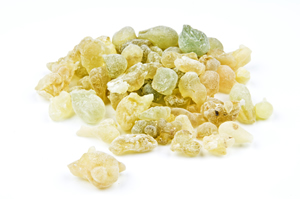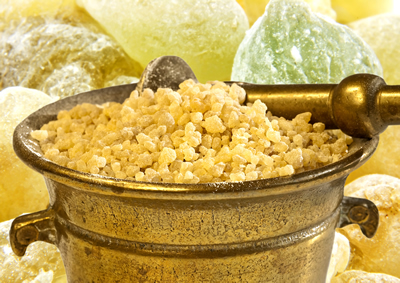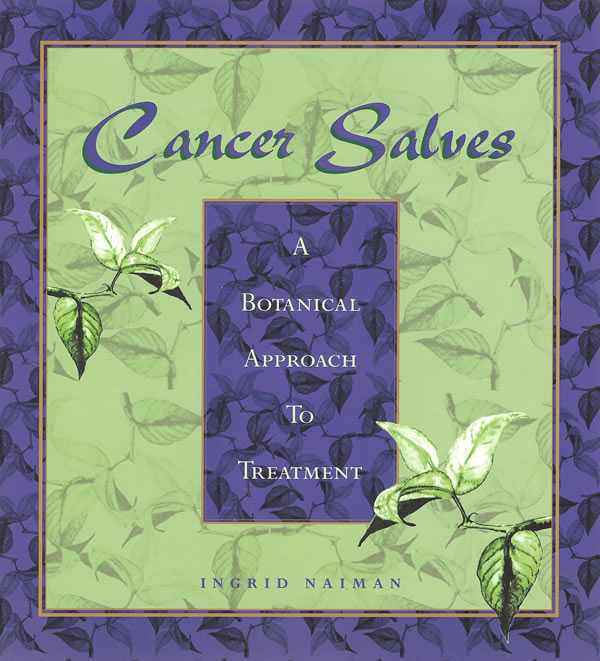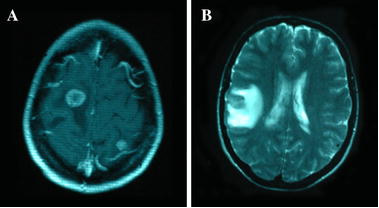Boswellia serrata
Author: Ingrid Naiman

Botanical Name: Boswellia serrata
Habitat: India and parts of Pakistan
Common names: Indian frankincense, Indian olibanum
Sanskrit: Shallaki
German Research on Boswellia serrata and Brain Tumors
Some years ago, Gabriela Wagener-Klein, a practitioner in
Parts of the Plant that are Used

Resin
Indian Frankincense
Boswellia serrata is a type of frankincense, one of the gifts brought by the Wise Men to celebrate the birth of Jesus. The frankincense used in the West is usually Boswellia carteri, a Somalian species whose properties have not been studied nearly as much as one might think given the Biblical references.
Translations into English
At the Bioneers Conference (in 2000), a man told me that his father has eight tumors. He wanted to know if there is anything at all that would help his father. He went on to do some internet research and to hire someone to translate some of the German language material. Gabriela’s report is evidently well supported by research in Europe.
Prof. Thomas Simmet
Prof. Thomas Simmet has researched Boswellia serrata on
Working with a neurosurgeon, Michael Winking, 25 patients were administered a dry extract of
CT Scans
|
|
CT before Boswellia
|
|---|---|
 |
CT after Boswellia [10 weeks] |
CT images compliments of
Foundation for Collaborative Medicine and Research
Gliome Tumors
At the university hospitals of Bochum and Giessen, patients with gliome tumors were administered somewhat higher dosages of Boswellia serrata, 3600 mg. per day. Within only a few days, many symptoms associated with brain tumors, such as headaches and lameness, were greatly lessened. While much of this effect might be more related to the reduction in edema than to the regression of the tumor, swelling and the resultant pressures are serious side effects of malignancy that impact the quality of life. The reports of these trials are preliminary and researchers are unwilling to speculate as to the long-term results and whether or not tumor growth is arrested.
Frankincense Varieties
I have long been familiar with Boswellia carteri and more recently Boswellia
Toe in the Water
Soon after hearing about Boswellia serrata and the research conducted in Germany, I decided to experiment on a dental abscess that suddenly flared up. I therefore took some capsules; the following day, the inflammation was about half what it was before taking the Boswellia serrata.
Anti-Inflammatory Properties
Boswellia serrata has been considered an alternative to NSAIDs for some time, but more recent research is placing more emphasis on the brain, suggesting that
Plant Chemicals
The oleo gum-resins contain 30-60% resin, 5-10% essential oils, which are soluble in the organic solvents, and the rest is made up of polysaccharides. The resinous part of Boswellia serrata possesses monoterpenes, diterpenes, triterpenes, tetracyclic
Source: https://www.ncbi.nlm.nih.gov/pmc/articles/PMC3309643/
Traditional Uses
 In Ayurvedic medicine,
In Ayurvedic medicine,
Boswellia is said to be beloved by elephants. There is a theory that the larger the animal, the more cells the animal would have. The more cells there are, the more risk there is of a mutation, but elephants rarely develop cancer. So, it is suspected that something in the elephant diet or
In the Arab world, frankincense is used as a parasiticide. It is added
The observations of health professionals, even those from two thousand years ago, may be correct but the precise explanation for the reduction in symptoms was perhaps not known. This said, since my first introduction to this amazing resin, it has been on my radar. I have seen blood parasites disappear in less than 24 hours, equilibrium restored to brain cancer patients in one-to-two days, followed by improvements in cognition and speech in three days, and, well, this is a very convincing herb.
Boswellia as a Modern Remedy
In the German-speaking world, most health care professionals are very much aware of Boswellia serrata. It is readily available in capsule form and usually has some turmeric and ginger or galangal added. Within the Ayurvedic world, the use of
Harvesting
Boswellia resin is harvested by making small incisions in the bark. The tree produces a milky sap to heal the wound and this is captured as a tear. During the dry season, tree resin can be collected every 3-4 weeks. The yield varies according to moisture and temperature, but
Advice, Warnings, and Contraindications
In
Recommended Video
Medicinal Grade Indian Olibanum
Dreamstime ID 30342512
© Jochenschneider
Purified Boswellia Serrata
Dreamstime ID 43167564
© Jochenschneider
Boswellia Serrata with Mortar
Dreamstime ID 35356079
© Jochenschneider
Boswellia Tears
Dreamstime ID 33459837
©
Many experts throughout history have regarded cancer salves and pastes as the most thorough, safe, and efficacious way to treat cancer, especially skin and breast cancers but also cancers of other organs. In this book, Ingrid Naiman meticulously traces the use of such products in ancient India and by Hildegard of Bingen, Native Americans, and modern physicians. She provides detailed instructions for making and using the salves, a fair comparison of the pros and cons, and eight pages of color pictures showing responses to the products. Visit her Cancer Salves site for more information, answers to frequently asked questions, and a checklist for people facing cancer.

Cancer Plants
Donations
Your donations are greatly appreciated.
Information
Newsletter
To be notified of new posts to this site, please subscribe, using the link button below. You can cancel your subscription at any time you choose.
Copyright by Dr. Ingrid Naiman 2003 and 2018
All Rights Reserved || Institute for Invisible Epidemics

